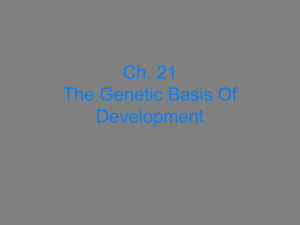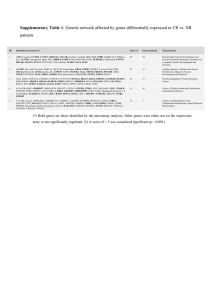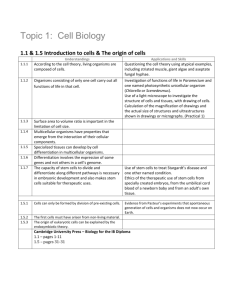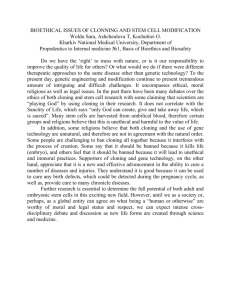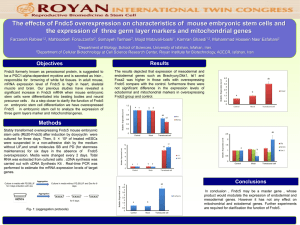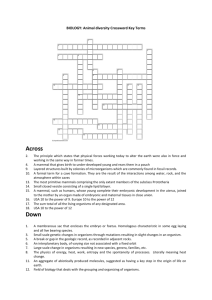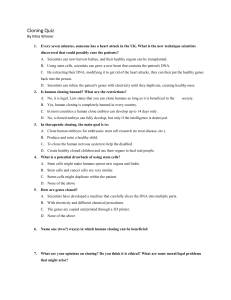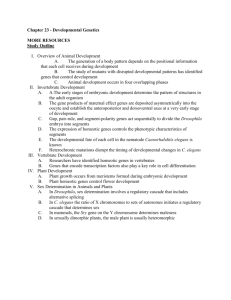Chapter 21 Study Guide
advertisement
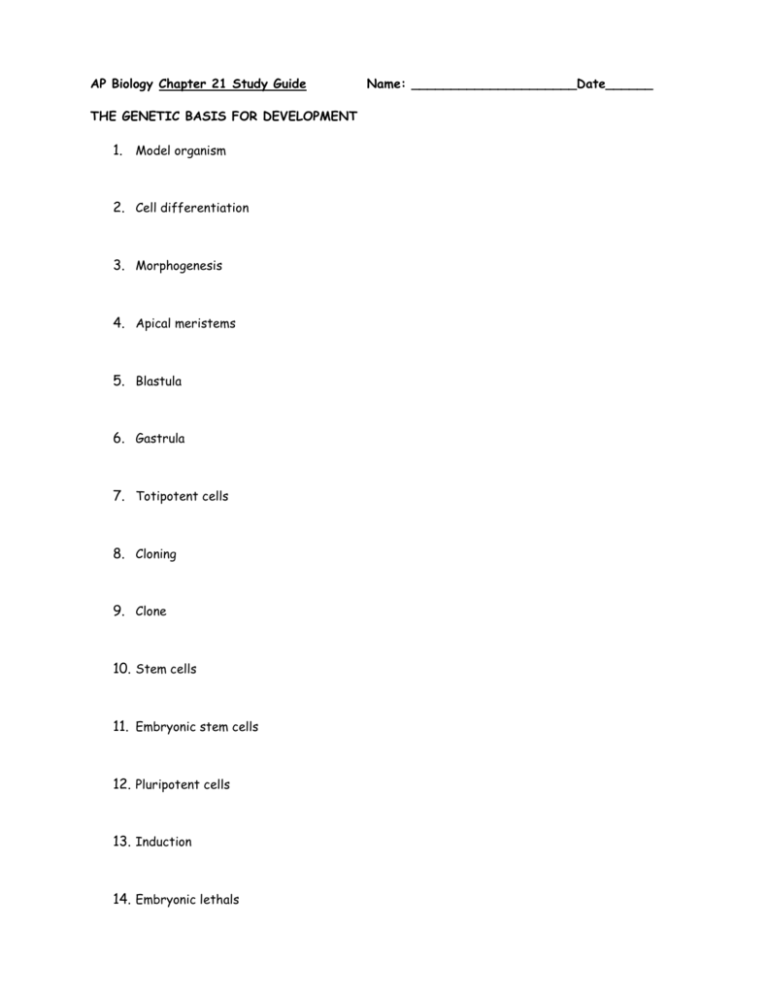
AP Biology Chapter 21 Study Guide THE GENETIC BASIS FOR DEVELOPMENT 1. Model organism 2. Cell differentiation 3. Morphogenesis 4. Apical meristems 5. Blastula 6. Gastrula 7. Totipotent cells 8. Cloning 9. Clone 10. Stem cells 11. Embryonic stem cells 12. Pluripotent cells 13. Induction 14. Embryonic lethals Name: _____________________Date______ 15. Homeotic genes 16. Cell lineage 17. Apoptosis 18. Carpels 19. Stamens 20. Petals 21. Sepals 22. Chimeras 23. Homeobox** 24. Hox genes** ** Make sure you really understand these terms and relate to book “Your Inner Fish” Questions: 1. A fertilzed egg divides by mitosis to produce an embryo, then a fetus, and eventually an adult. What are 2 other important processes involved in embryonic development? Define each below: a) b) 2. Differential gene expression drives the 2 processes mentioned above. How are the following terms related to differential gene expression? a. genomic equivalence: b. totipotency: c. pluripotency: 3. As briefly as possible, explain reproductive cloning of a mammal by nuclear transplantation: (See challenge sheet) 4. What are stem cells? How are these used in therapeutic cloning? 5. The following processes control differentiation and morphogenesis as mentioned in the first question. Explain how each process works: a. cytoplasmic determinant: b. cell-cell signals: c. determination: d. pattern formation: 6. Use figure 21.11, page 11 in your text to explain how positional information controls pattern formation in the embryo: 7. C. elegans is a model organisms for studying apoptosis in the development of animals. Explain the importance of apoptosis in the development of of multicellular organisms. Note: programmed cell death (“cell suicide”) is critical in the development of multicellular organisms..Why??? (give an example). 8. Refer to Figure 21.18, page 428. in your textbook. Ced-9, Ced-4 and Ced-3 are all caspase enzymes involved in apoptosis. How does the result of a “death signal” binding a receptor affect the transduction pathway or “cascade” of enzyme activity? 8. The DNA sequences called homeoboxes, which help homeotic genes in animals direct development, are common to flies, mice and humans. Given this similarity, explain why these animals are so different from each other?

